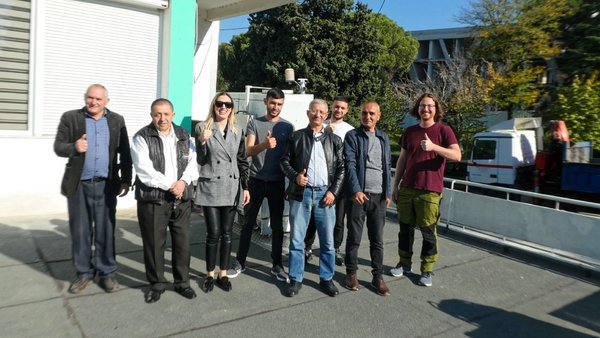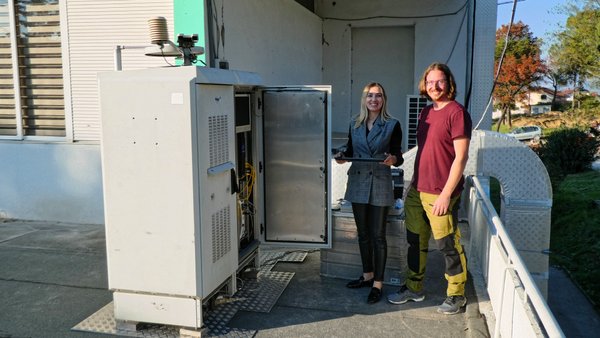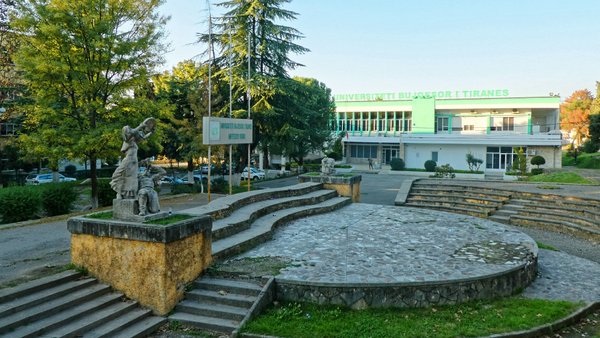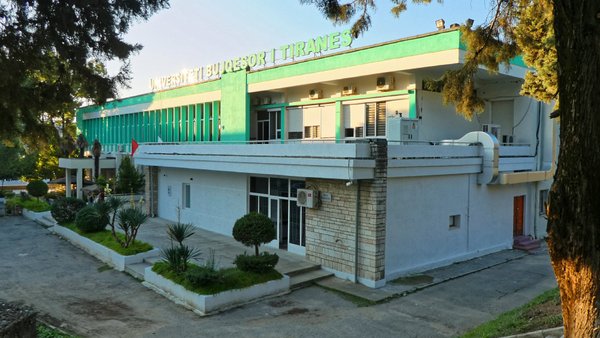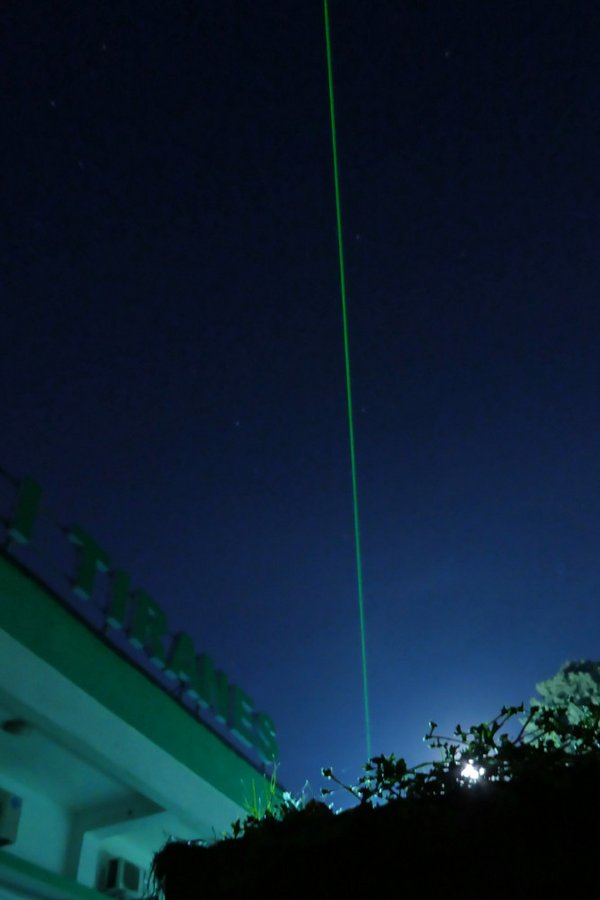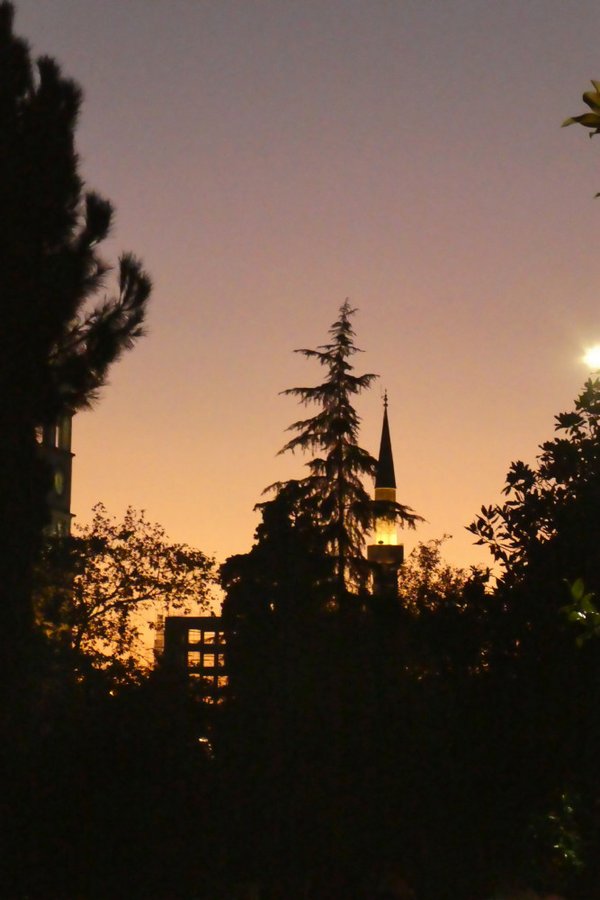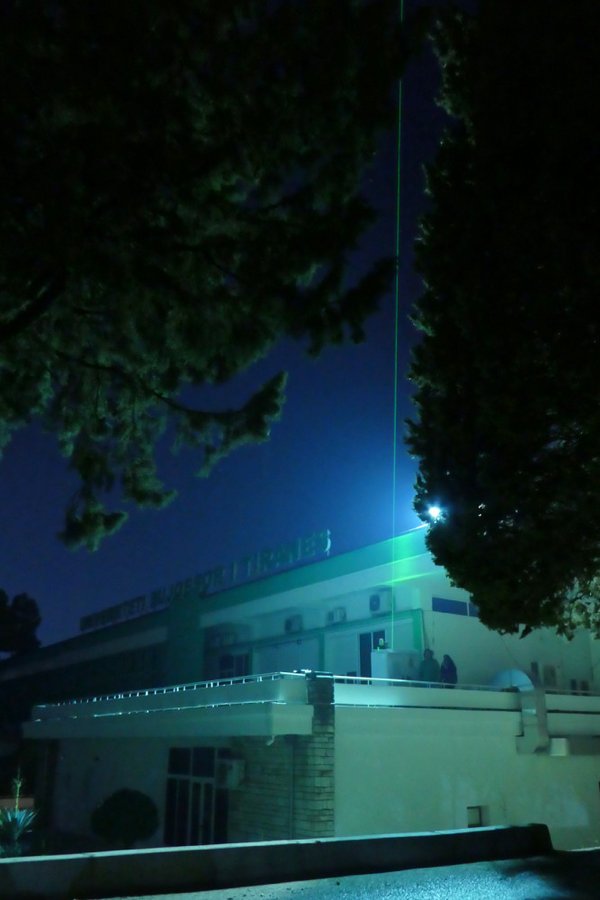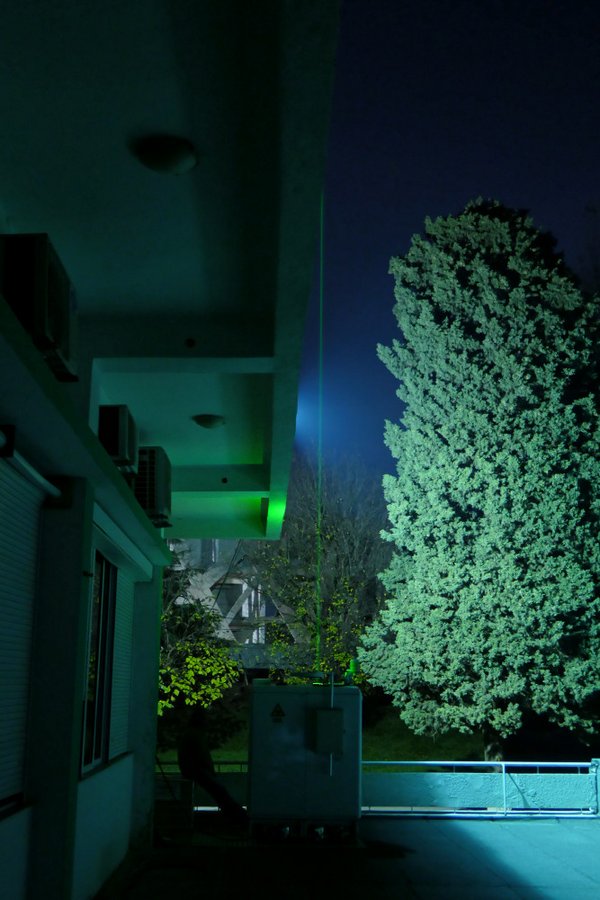Measurements of Aerosol Profiles above Tirana have started
Leipzig,
15.11.2022
New insights into air quality and climate expected in the Western Balkans
Tirana/Leipzig. For the first time, a ground-based polarization lidar will explore the atmosphere above Albania by green laser light. The device was developed and built in Leipzig at the Leibniz Institute for Tropospheric Research (TROPOS). The automated Raman lidar Polly was installed in November on the roof of the Agricultural University of Tirana by the Lidar Group of TROPOS. The Rector of the university and the Vice-Rector for science were among those present at the inauguration ceremony. The measurements are part of the cooperation between TROPOS and the Agricultural University of Tirana. The system should remain in Tirana for at least a year.
The measurements are the first of their kind ever in Albania. So far, such measurements are regularly carried out in the Western Balkans only in Belgrade (Serbia). But especially the mountainous south of the Western Balkans suffers from heavy air pollution in the winter months. The data from Tirana should therefore help to better understand the impact of aerosols and clouds on health and climate.
Aerosol particles in the atmosphere have a large impact on the global radiation budget, on clouds, on plants, and on the human health. These particles are produced or emitted by different processes and dispersed and transported locally, regionally, continentally, and even intercontinentally.
Especially, dust from deserts, smoke particles from biomass burning processes, anthropogenic particles from industrial and other human activities, and sea salt particles from the oceans are distributed worldwide and have a big impact on weather and climate.
The transport of aerosol particles occurs at different height levels in the atmosphere, from the ground layer up to the stratosphere in 10-15 km height. Only lidar systems are capable of capturing the vertical distribution of these particles and their impact on cloud formation and glaciation.
Mid November 2022, a laser radar system for vertically resolved aerosol measurements started its operation at the Agricultural University of Tirana. For the first time, such vertically-resolved measurements are performed in Albania by such a ground-based aerosol lidar. The installed system uses green laser light for the detection of the vertical structure of particle layers in the atmosphere and applies up-to-date techniques (depolarization measurement and Raman scattering) to discriminate the different particle types at the different altitudes in the atmosphere.
The researchers expect new insights into the vertical aerosol distribution above Albania close to the sea. This knowledge is important to understand air pollution, to study the distribution of aerosols, to feed climate models, and also to improve satellite observations of climate parameters from space.
This atmospheric research project is a cooperation between the Agricultural University of Tirana and the Leibniz Institute for Tropospheric Research (TROPOS), Germany.
Lidar data online
The lidar data from Tirana are online and open access within PollyNet: https://polly.tropos.de/calendar/location/46
Contacts for media:
Dr. Dietrich Althausen / Gladiola Malollari / Dr. Ronny Engelmann
Working Group Ground Based Remote Sensing, Leibniz Institute for Tropospheric Research (TROPOS)
Phone +49 341 2717-7063
Phone +49 341 2717-7315
https://www.tropos.de/institut/ueber-uns/mitarbeitende/dietrich-althausen
https://www.tropos.de/institut/ueber-uns/mitarbeitende/ronny-engelmann
and
Dr Albert Ansmann
Leader of the Working Group Ground Based Remote Sensing, Leibniz Institute for Tropospheric Research (TROPOS)
Phone +49 341 2717-7064
https://www.tropos.de/en/institute/about-us/employees/albert-ansmann
or
Tilo Arnhold
Public Relations, Leibniz Institute for Tropospheric Research (TROPOS)
Phone: +49-341-2717-7189
https://www.tropos.de/en/current-issues/press-releases
Further information and links:
PollyNet - Worldwide Aersosol Characterization
https://www.tropos.de/en/research/projects-infrastructures-technology/coordinated-observations-and-networks/pollynet
Polarization lidar
https://www.tropos.de/en/research/projects-infrastructures-technology/technology-at-tropos/remote-sensing/polarization-lidar
Raman lidar
https://www.tropos.de/en/research/projects-infrastructures-technology/technology-at-tropos/remote-sensing/raman-lidar
Press release of Agricultural University of Tirana
https://ubt.edu.al/event/universiteti-bujqesor-i-tiranes-behet-pjese-e-15-stacioneve-ne-rang-boteror-te-monitorimit-te-atmosferes-ne-funksion-te-ndotjes-se-ajrit/
Universiteti Bujqësor i Tiranës (UBT)
http://ubt.edu.al/
Klan TV: Shqipëria nis matjen e ndotjes në hapësirë (Albania starts measuring pollution in the atmosphere) - Feature on Albanian Television Klan on the launch of the new PollyXT lidar in Tirana (13.11.22):
https://www.youtube.com/watch?v=uJV9qwRJpCs
SCAN TV: Pasojat e ndotjes së ajrit në mjedis e shëndet (Environmental and Health Consequences of Air Pollution) - Interview with Gladiola Malollari (UBT/TROPOS) on Albanian Television SCAN on the launch of the new PollyXT lidar in Tirana (11.11.22):
https://www.youtube.com/watch?v=34NGOKC6dNQ
The Leibniz Institute for Tropospheric Research (TROPOS) is a member of the Leibniz Association, which connects 97 independent research institutions that range in focus from the natural, engineering and environmental sciences via economics, spatial and social sciences to the humanities. Leibniz Institutes address issues of social, economic and ecological relevance. They conduct knowledge-driven and applied basic research, maintain scientific infrastructure and provide research-based services.
The Leibniz Association identifies focus areas for knowledge transfer to policy-makers, academia, business and the public. Leibniz institutions collaborate intensively with universities – in the form of “Leibniz ScienceCampi” (thematic partnerships between university and non-university research institutes), for example – as well as with industry and other partners at home and abroad.
They are subject to an independent evaluation procedure that is unparalleled in its transparency. Due to the importance of the institutions for the country as a whole, they are funded jointly by the Federation and the Länder, employing some 20,500 individuals, including 11,500 researchers.
The entire budget of all the institutes is approximately 2 billion euros. They are financed jointly by the Federal Government and the Länder. The basic funding of the Leibniz Institute for Tropospheric Research (TROPOS) is therefore financed by the Federal Ministry of Education and Research (BMBF) and the Saxon State Ministry of Science and the Arts (SMWK). The Institute is co-financed with tax revenues on the basis of the budget approved by the Saxon State Parliament.
www.leibniz-gemeinschaft.de/en/home/
www.bmbf.de/en/index.html
https://www.smwk.sachsen.de/
